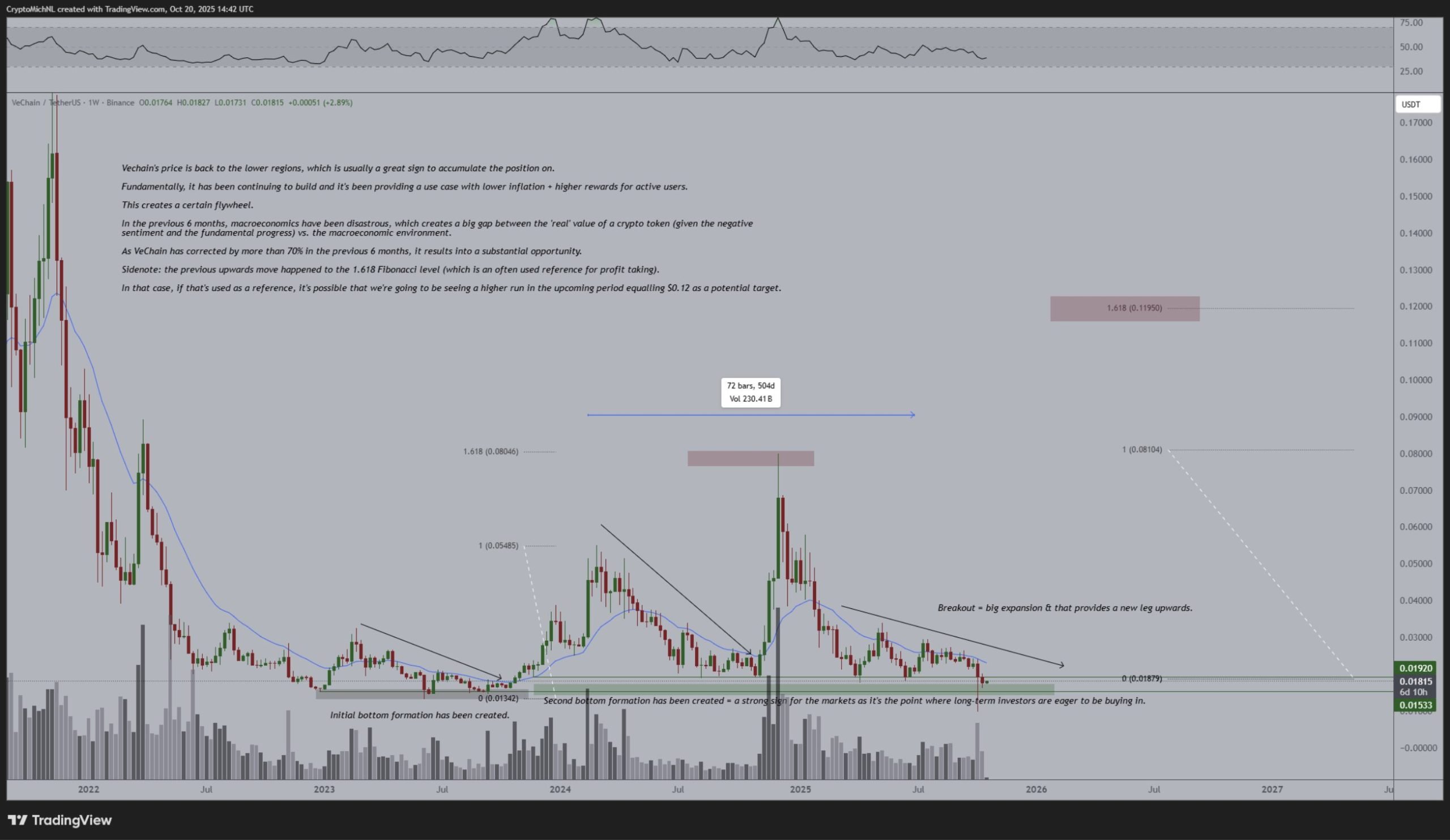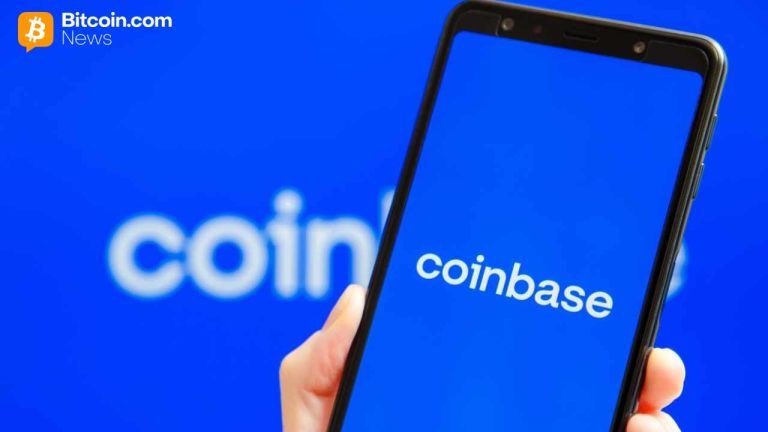VeChain (VET) Shows Strength Amid Market Turbulence — Here’s Why It Matters
- VeChain holds firm after market turmoil, showing steady ecosystem growth and maintaining key technical levels.
- Van de Poppe views VET’s correction as a strong accumulation zone with breakout potential near $0.12.
Crypto markets suffered a historic collapse on October 11 when over $19 billion in leveraged positions cleared in a single day, wiping out traders across major exchanges. Bitcoin plunged from above $126,000 to below $105,000, triggering deep losses across altcoins, some dropping more than 40% within hours.
That turmoil stemmed from renewed US-China trade tensions after Donald Trump announced a 100% tariff on Chinese tech and software exports. The news caused mass liquidation, thinning order books, and draining liquidity across the sector. Since then, the market has shown signs of recovery, and VeChain, in particular, is one of these assets.
VeChain Shows Technical Stability Amid Market Fallout
VeChain stood out for holding its technical support zones through the crash. Crypto analyst Michaël van de Poppe noted that even after sharp corrections, the project continued building its ecosystem with new use cases that balance lower inflation and higher user rewards.
He described the situation as a “maximum financial opportunity” for patient investors, pointing to VeChain’s resilience compared with other altcoins. The asset’s steady network development and expanding fundamentals created what he called a “flywheel effect” supporting gradual, long-term growth.
Currently, VET trades at $0.017, marking a 1.69% daily decline and a total market capitalization of $1.46 billion. Despite bearish momentum, Van de Poppe said the project remains technically strong, with its price revisiting accumulation zones that could attract long-term holders.
Analyst Sees VeChain Poised for $0.12 Surge
Van de Poppe explained that VeChain recently reached the 1.618 Fibonacci extension level during a prior uptrend, a zone often used for profit-taking. If that pattern repeats, he suggested that VeChain could aim for a potential price target near $0.12 in the upcoming market recovery.
He called the current situation a “substantial opportunity,” noting that the token’s 70% decline in the last six months might be setting up the next phase of recovery. “That’s why I think that it’s an interesting one to monitor for a potential breakout when the markets are turning,” he stated.
 Source: X
Source: X
VeChain is trading below both its 7-day SMA at $0.01732 and its 30-day SMA at $0.02048. The MACD histogram remains in the negative zone, reflecting continued selling pressure, while the RSI stands at 35, hovering near oversold territory.
It now faces immediate resistance between $0.0182 and $0.0185 from recent intraday highs. A breakout above this zone could trigger a move toward $0.0195 to $0.0200. On the downside, support sits between $0.0165 and $0.0160, where buyers may look to defend against further losses.
]]>You May Also Like

Warsaw Stock Exchange lists its first Bitcoin ETF

Revolutionary Visa Stablecoin Integration: Unlocking New Payment Frontiers with Paxos
